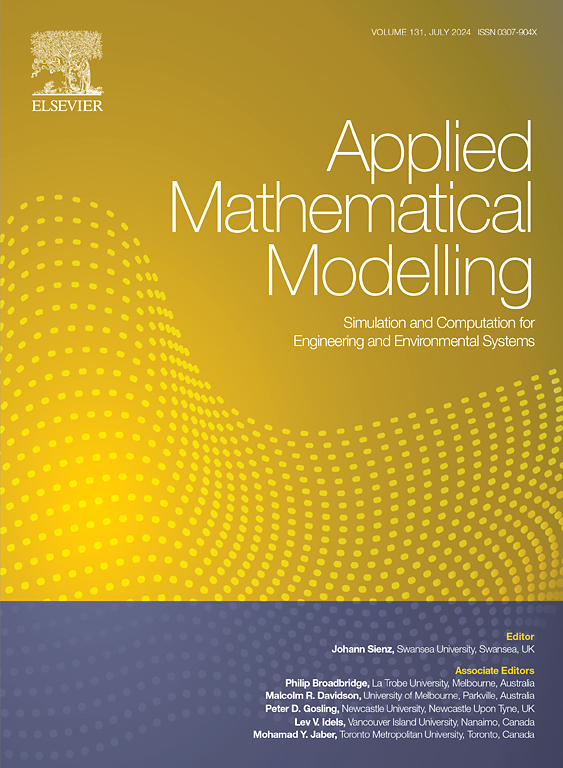变分状态估计的偏差和多尺度校正方法
IF 4.4
2区 工程技术
Q1 ENGINEERING, MULTIDISCIPLINARY
引用次数: 0
摘要
数据同化性能会受到观测数据中偏差噪声的严重影响,当系统缺乏平稳性时,偏差噪声会改变信号幅度,并引入快速振荡或不连续性。为了缓解这些问题,本文采用了所谓的参数化背景数据弱法进行变分状态估计。这种方法依赖于由一组约束条件参数化的背景流形,通过求解减阶背景模型上的最小化问题,在输入测量所施加的约束条件下实现状态估计。所提出的方法包含一种新颖的偏差校正机制和一种流形分解,通过将快速振荡视为基于经典重构算法的双尺度分裂的慢衰减模式来处理快速振荡。该方法在不同的实例中得到了验证,包括同化有偏差的合成数据、不连续信号以及从实验测量中获得的多普勒超声数据。本文章由计算机程序翻译,如有差异,请以英文原文为准。
Bias and multiscale correction methods for variational state estimation
Data assimilation performance can be significantly impacted by biased noise in observations, altering the signal magnitude and introducing fast oscillations or discontinuities when the system lacks smoothness. To mitigate these issues, this paper employs variational state estimation using the so-called parametrized-background data-weak method. This approach relies on a background manifold parametrized by a set of constraints, enabling the state estimation by solving a minimization problem on a reduced-order background model, subject to constraints imposed by the input measurements. The proposed formulation incorporates a novel bias correction mechanism and a manifold decomposition that handles rapid oscillations by treating them as slow-decaying modes based on a two-scale splitting of the classical reconstruction algorithm. The method is validated in different examples, including the assimilation of biased synthetic data, discontinuous signals, and Doppler ultrasound data obtained from experimental measurements.
求助全文
通过发布文献求助,成功后即可免费获取论文全文。
去求助
来源期刊

Applied Mathematical Modelling
数学-工程:综合
CiteScore
9.80
自引率
8.00%
发文量
508
审稿时长
43 days
期刊介绍:
Applied Mathematical Modelling focuses on research related to the mathematical modelling of engineering and environmental processes, manufacturing, and industrial systems. A significant emerging area of research activity involves multiphysics processes, and contributions in this area are particularly encouraged.
This influential publication covers a wide spectrum of subjects including heat transfer, fluid mechanics, CFD, and transport phenomena; solid mechanics and mechanics of metals; electromagnets and MHD; reliability modelling and system optimization; finite volume, finite element, and boundary element procedures; modelling of inventory, industrial, manufacturing and logistics systems for viable decision making; civil engineering systems and structures; mineral and energy resources; relevant software engineering issues associated with CAD and CAE; and materials and metallurgical engineering.
Applied Mathematical Modelling is primarily interested in papers developing increased insights into real-world problems through novel mathematical modelling, novel applications or a combination of these. Papers employing existing numerical techniques must demonstrate sufficient novelty in the solution of practical problems. Papers on fuzzy logic in decision-making or purely financial mathematics are normally not considered. Research on fractional differential equations, bifurcation, and numerical methods needs to include practical examples. Population dynamics must solve realistic scenarios. Papers in the area of logistics and business modelling should demonstrate meaningful managerial insight. Submissions with no real-world application will not be considered.
 求助内容:
求助内容: 应助结果提醒方式:
应助结果提醒方式:


